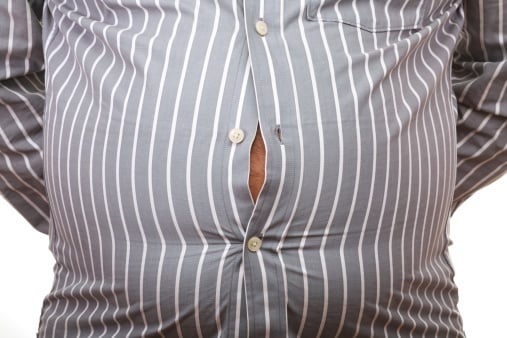 Unfortunately many people are not fully aware of the danger of carrying excess body fat around their waistlines. Most of us know that in order to get those beach-body abs we all long for, we have to first lose the excess abdominal fat. This is almost everybody’s only motivation for trying to lose belly fat. However, there are deeper and more serious disease prevention reasons to address excess fat in this area.
Unfortunately many people are not fully aware of the danger of carrying excess body fat around their waistlines. Most of us know that in order to get those beach-body abs we all long for, we have to first lose the excess abdominal fat. This is almost everybody’s only motivation for trying to lose belly fat. However, there are deeper and more serious disease prevention reasons to address excess fat in this area.
Two Types of Body Fat
Humans carry two different types of fat in their bodies:
- Subcutaneous fat: The noticeable layer of fat that is just beneath the skin (the fat you need to lose to see your abs).
- Visceral fat: Fat that is found deeper in the abdominal area under the muscles and surrounding the organs, such as liver, pancreas, and intestines.
The majority of people are mainly concerned with losing subcutaneous fat since this is the fat you will need to lose in order to let your abs shine through. If you are carrying excess visceral fat, however, there are more reasons to be concerned.
The Health Risks
Because visceral fat resides deep in the abdomen, it can be a huge health risk. Having excess visceral fat can lead to increased risk of the following health conditions:
- Type 2 diabetes
- Heart disease
- Breast cancer
- High blood pressure
- Stroke
- High cholesterol
- Metabolic Syndrome
Visceral fat can go completely unnoticed because you cannot see it with the naked eye. One way researchers detect visceral fat is through an MRI, which takes a picture of the inside of the abdominal area.
Tips for Losing Fat
Here are some simple tips to help you lose and prevent storing visceral and subcutaneous fat:
- Use compound movements: Compound movements allow you to get the most bang for your fitness buck. Incorporate as many multi-joint movements as possible into your workout in order to use more energy and burn more calories. Examples are squats, dead lifts, pushups, bench presses, lat pull-downs, and lunges.
- Try HIIT (High Intensity Interval Training): The purpose of HIIT is to alternate between short bursts of intense activity for a fixed period of time—for example, 20 seconds followed by a short rest period. Because of the fast-paced nature of HIIT, it will cause you to use great amounts of energy within a short time, causing a huge calorie-burning workout. Don’t believe me? Join one of our HIT classes at NIFS and see if it isn’t the best workout you’ve had in years!
- Change up your workouts: Switching up your workouts periodically will keep your body from becoming too accustomed to your workouts. Once your body becomes too familiar with a certain exercise routine, it begins to decrease the amount of energy needed to complete the routine. By switching up your workouts every 4 to 5 weeks, you are constantly throwing new challenges at your body, forcing it to never reach a plateau. Work with one of our Health Fitness Specialists today to get new ideas on how to switch up your workouts regularly.
- Improve your diet: NIFS new app, My Nutirition Coach, can help you get daily feedback on your eating habits. Nutrition plays an important part in health and fitness!
Storing fat can be a little more dangerous than you might have thought. When you actually take into consideration the harm you may be doing to your body, hopefully you will be more motivated to shed those extra pounds!
Ready to take the first step to better health and fitness? Schedule a free fitness assessment with us today!
This blog was written by Darius Felix, Health Fitness Specialist at NIFS. To find out more about the NIFS bloggers, click here.

